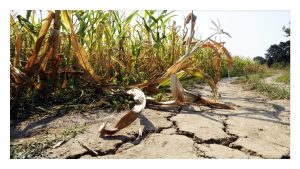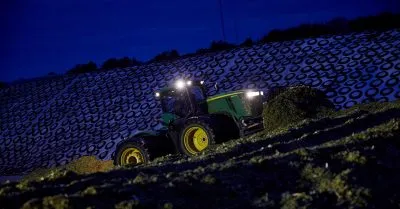Drought.
It’s one of the many words that make a farmer cringe. A long stretch of months without enough rain can obviously wreak havoc on your crops, but there are some less obvious difficulties that come with extended dry periods. Like rising costs, for instance. When drought is either happening or forecast to happen, the price of everything on the farm rises, which also means increased feed prices.
As of mid-April, more than 209 million acres of crops in the United States were facing drought-like conditions. Considering that this is the “wet season,” this isn’t a great sign for the coming summer! But by growing your own forage, you’re not only making an investment in your near-future, you’re making headway toward mitigating some of the price jumps that might come with an extended drought.
Costs
Growing your own forage, however, isn’t without its own costs. There’s seed and fertilizer costs. Equipment maintenance and man-hours. Then, you also have to grow and harvest the forage yourself. It’s a lot to consider. But… consider this: Growing your own forage gives you an element of control. If you control your own feed supply, you can control the costs and the nutrients that your animals receive. This is not always the case with purchased feed!
With possible widespread drought conditions coming this year piled on top of already tenuous supply chain issues, the price of feed will likely continue to skyrocket. And overall silage yield will be down compared to recent years, and overall forage quality might not be as good as it should be thanks to growing conditions.
Extended periods of drought can significantly reduce alfalfa yield and quality. And while corn is more impacted on the yield end than in overall quality, those yield shortfalls can be significant, meaning that cost increases will be significant.

Your Goals
All this is a long way of saying that if you want to make sure you do right by your animals, your primary goal should be to harvest a high-quality forage from the field and ensile it. That way, you can be sure that you have high-quality feed on hand when you need, and at the price: Already paid for.
Growing your own forage helps you avoid a potential decrease in quality that could not only impact your animals productivity and well-being but also cost you time and money. If your animals aren’t getting what they need from your purchased forage, your nutritionist will likely have balance the ration differently, adding other feedstuffs that must be bought.
If you do take the diligent route and grow your own forage, it’s quite important to protect your investment with a trusted inoculant. Quality forage is more valuable than ever, so use an inoculant to ensure proper fermentation. Having a large supply of silage that you can trust on hand might be worth more than ever this year.
If you’re in need of advice on how to achieve this, drop BONSILAGE a line!



